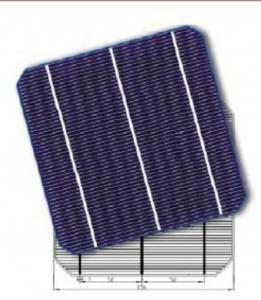Solar pumps are a fantastic way to power your fountain without the need for any electrical outlets or cords. Not only are they environmentally friendly, but they’re also incredibly cost-effective and easy to install. In this article, we’ll explore the benefits of using solar pumps, how they work, and some tips for choosing the right one for your fountain.
The Power of the Sun: Harnessing Solar Energy for Your Fountain
Solar energy is a renewable resource that’s abundant and free. By using a solar pump, you’re tapping into this limitless power source to run your fountain. This is not only good for the environment, but it’s also a great way to save on your electricity bills. Plus, the initial investment in a solar pump can be quickly recouped through these savings.
How Solar Pumps Work
A solar pump works by converting sunlight into electricity through a solar panel. This electricity is then used to power the pump, which circulates water in your fountain. The solar panel needs to be placed in a location where it can receive direct sunlight for optimal performance. The pump itself can be placed in the water, and it’s typically small and discreet, so it won’t detract from the aesthetic of your fountain.
Benefits of Solar Pumps
There are several benefits to using solar pumps for your fountain:
1. Environmentally Friendly: Since solar pumps run on sunlight, they produce no greenhouse gases or pollutants. This makes them an eco-friendly choice for those looking to reduce their carbon footprint.
2. Cost-Effective: While the upfront cost of a solar pump may be higher than a traditional electric pump, the long-term savings on electricity bills can make it a wise investment.
3. Easy to Install: Solar pumps are generally easy to set up, with no need for complex wiring or electrical work. This makes them a great option for DIY enthusiasts.
4. Low Maintenance: With no moving parts that can wear out or break down, solar pumps require very little maintenance. This can save you time and money in the long run.
5. Versatility: Solar pumps are suitable for a variety of fountain types, from small tabletop fountains to larger outdoor water features.
Choosing the Right Solar Pump
When selecting a solar pump for your fountain, consider the following factors:
1. Fountain Size: The size of your fountain will determine the power output you need from your solar pump. Make sure to choose a pump that can handle the water flow required for your fountain.
2. Sunlight Availability: Consider the amount of sunlight your fountain location receives. If your fountain is in a shaded area, a solar pump may not be the best choice.
3. Pump Features: Look for features such as adjustable flow rates, which can help you customize the look and sound of your fountain.
4. Durability: Choose a pump made from durable materials that can withstand the elements and last for a long time.
5. Price: While it’s important to consider the cost, don’t sacrifice quality for a lower price. A good solar pump is an investment that will pay off in the long run.
Installing Your Solar Pump
Once you’ve chosen the right solar pump, the installation process is relatively straightforward:
1. Position the Solar Panel: Find a sunny spot for your solar panel. It should be free from obstructions that could block sunlight.
2. Place the Pump: Submerge the pump in the water, ensuring it’s securely positioned and won’t be dislodged by the water flow.
3. Connect the Wires: Attach the wires from the solar panel to the pump, following the manufacturer’s instructions.
4. Test the System: Turn on the pump and check for proper operation. Make any necessary adjustments to ensure the water flow is to your liking.
Maintenance and Troubleshooting
While solar pumps require minimal maintenance, there are a few things you can do to keep them running smoothly:
1. Clean the Solar Panel: Regularly clean the solar panel to ensure it’s receiving the maximum amount of sunlight.
2. Inspect the Pump: Periodically check the pump for any signs of wear or damage.
3. Check the Water Level: Make sure the water level in your fountain is sufficient for the pump to operate effectively.
4. Troubleshoot: If the pump isn’t working as expected, check the solar panel for proper positioning and the pump for any obstructions in the water flow.
The Future of Solar Pumps
As technology advances, solar pumps are becoming more efficient and affordable. They’re an increasingly popular choice for fountain enthusiasts looking to go green and save money. With the sun as your power source, you can enjoy the tranquility of your fountain without worrying about the environmental impact or escalating energy costs.
In conclusion, solar pumps offer a sustainable and practical solution for powering your fountain. They’re easy to install, low maintenance, and provide a beautiful focal point for your outdoor space or home. By choosing the right solar pump and following the installation and maintenance tips provided, you can enjoy the benefits of solar power for years to come.

